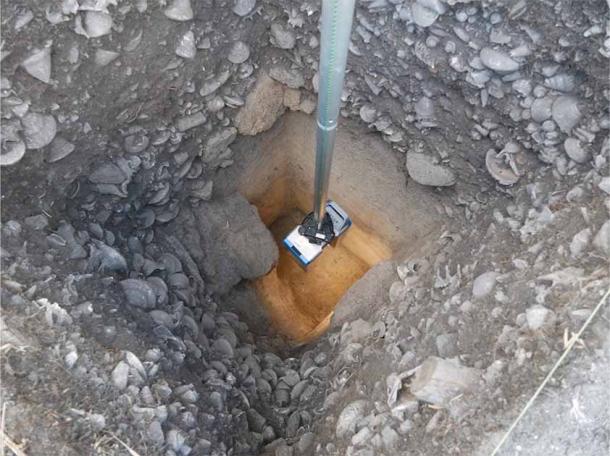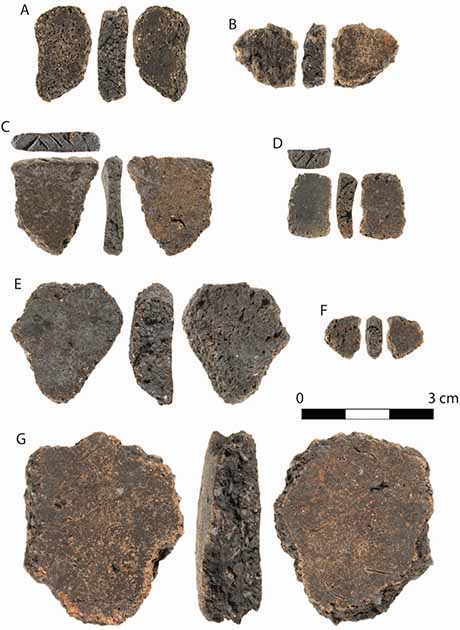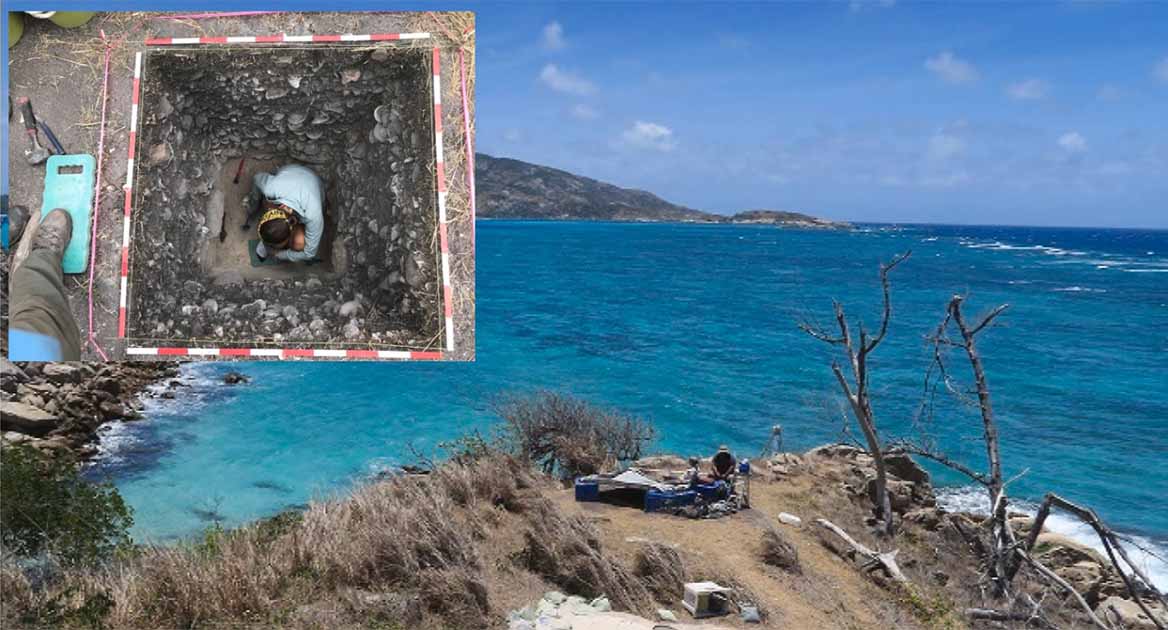New Barrier Reef Find Proves Australians Didn’t Learn Pottery from Europe
A new discovery off the northwestern coast of Australia has rewritten the history books. Up until now the academic consensus was that pottery was introduced to Australia by Europeans. This has now been proven wrong.
This new find shows us that Australians were making pottery items well before the Europeans arrived. Thousands of years before, in fact: archaeologists have uncovered numerous pottery fragments dating back 2,000 to 3,000 years.
This now marks the oldest pottery ever found in Australia, discovered only 50cm (20 inches) below the surface on an island situated off the coast of Cape York Peninsula. The geological analysis of these ceramics suggests they were crafted locally, utilizing clays and tempers sourced directly from Jiigurru (also known as Lizard Island).
So, if not from the Europeans, where did the Australians learn to craft pottery?
A Cross Cultural Exchange
In a recently published paper in the Quaternary Science Reviews, a comprehensive account unveils the discovery of 82 pottery fragments all sourced from a solitary excavation site found on this Great Barrier Reef island. The age of this pottery coincides with the era when the Lapita people residing in southern Papua New Guinea were renowned for their pottery-making skills. This correlation certainly hints at potential cultural exchanges or influences between these communities.
- Aboriginal Dreamtime Stories and the Creation Myths of Australia
- How to get to Australia … more than 50,000 years ago

Laser scanning being conducted at the site to preserve the in-situ data (Science Direct / Ian J. McNiven)
“The evidence points to a history of deep connections across the Coral Sea, facilitated by advanced canoe voyaging technology and open-sea navigation skills, contradicting the outdated notion of Indigenous isolation,” said Monash University’s Professor Ian McNiven in a press release. “These findings not only open a new chapter in Australian, Melanesian, and Pacific archaeology but also challenge colonialist stereotypes by highlighting the complexity and innovation of Aboriginal communities.”
Amidst their excavations, researchers stumbled upon the remnants of shellfish and fish, evidence of sustenance gathered and consumed by ancient inhabitants of the island over 6,000 years ago. Jiigurru is now established as the earliest known offshore island settlement within the northern Great Barrier Reef region.
These pieces represent not just the earliest securely dated pottery found in Australia, but also an intricate web of trade and cultural exchange connecting Indigenous Australians to a vast network of seafaring communities stretching from Papua New Guinea to the Torres Strait and Pacific Islands. The paper highlights the existence of a vibrant "community of cultures across the Coral Sea”.

Some of the pottery shards recovered from the site. They may be too small to tell how they were formed originally, but we know they were manufactured using local resources, and we know that they predate the arrival of Europe and therefore rewrite the history of Australia (Science Direct / Steve Morton)
Archaeologists assert that these discoveries will require a rethink of cultural interactions across the entire western Pacific. The finds herald the start of a much deeper insight into the rich tapestry of ancient maritime civilizations in the region.
Understanding the Crafting Process
The process of understanding how these pots were crafted and their original appearance remains a substantial challenge. The shards, averaging less than 2cm (1 inch) in size, are fragmented, which makes their full form and function hard to guess.
Dingaal clan member and Walmbaar Aboriginal Corporation Chairperson Kenneth McLean added, “Working in collaboration with archaeologists and Traditional Owners and working on Country is something that's never been done before for my people, where we work together on Country, sharing each other's story on Country, and not only sharing this story from our people, the Old People, and from the archaeology side, scientifically, which is a good outcome that we can see. We can look after the Country together.”
These pottery pieces may be small but the story they tell is enormous indeed, which explains why the research journey has taken years before reaching publication, as noted by Ulm. The excavation, spanning from mid-2017 to 14 months later, disrupted a prevalent academic perspective, and they had to be sure.
The site itself has only been known for some two decades. The initial sighting of pottery fragments on Jiigurru was made by a vacationing archaeologist from New Zealand in 2006, while snorkeling in the shallow lagoon.
Efforts to accurately date these pottery fragments initially proved inconclusive, yet many scholars interpreted them as tangible evidence of the Lapita people's presence in Australia. Originating from the islands of eastern Papua New Guinea, the Lapita and their descendants embarked on an expansive migration across remote Oceania over several centuries.
Alongside their distinctive pottery, they introduced pigs, dogs, chickens, taro, and breadfruit to various regions, extending their cultural and agricultural influence to the Solomon Islands, Vanuatu, New Caledonia, Fiji, Tonga, and Samoa, reports The Guardian.
The researchers involved are hopeful that the discovery of ancient pottery on the Great Barrier Reef suggests the probable existence of additional remains, potentially including artifacts associated with the Lapita culture, dispersed throughout the extensive and largely unexplored northeastern Queensland coastline.
This revelation underscores the tantalizing prospect of uncovering further evidence that could significantly enrich our understanding of the region's ancient maritime civilizations and their interconnectedness.
“These networks facilitated the exchange of objects and ideas between Australian and New Guinean coastal communities over the past 3000 years. While some objects, like cone-shell body adornments and bamboo smoking pipes, indicate widespread sharing of culture and ideas, others, such as pottery, also suggest the sharing of technology,” conclude the research team.
Top image: The excavation site on Jiigurru where the discovery of ancient pottery has rewritten the history of Australia. Source: Science Direct / Ian J. McNiven.
By Sahir Pandey
References
Hinchcliffe, J. 2024 . Great Barrier Reef discovery overturns belief Aboriginal Australians did not make pottery, archaeologists say. Available at: https://www.theguardian.com/australia-news/2024/apr/10/great-barrier-reef-discovery-overturns-belief-aboriginal-australians-did-not-make-pottery
Tuhin, M. 2024. Aboriginal Australians Made Pottery Thousands of Years Before Europeans Arrived. Available at: https://archaeonews.net/aboriginal-australians-made-pottery-thousands-of-years-before-europeans-arrived
Ulm, S. et al. 2024. Early Aboriginal pottery production and offshore island occupation on Jiigurru (Lizard Island group), Great Barrier Reef, Australia. Quatenary Science Reviews. Available at: https://doi.org/10.1016/j.quascirev.2024.108624


















Comments
Do we know for sure this was shared technology? It may have been that, but it may have also simply been Lapita/Papuan presence in the area which should hardly be surprising. If it was shared technology with a local Aboriginal tribe, the technology appears to have died out in Australia. There is not a single shred of good evidence for Aboriginal pottery at the tine of European exploration although, as good evidence and Australian anthropology long ago parted company, I guess that doesn't so much matter...